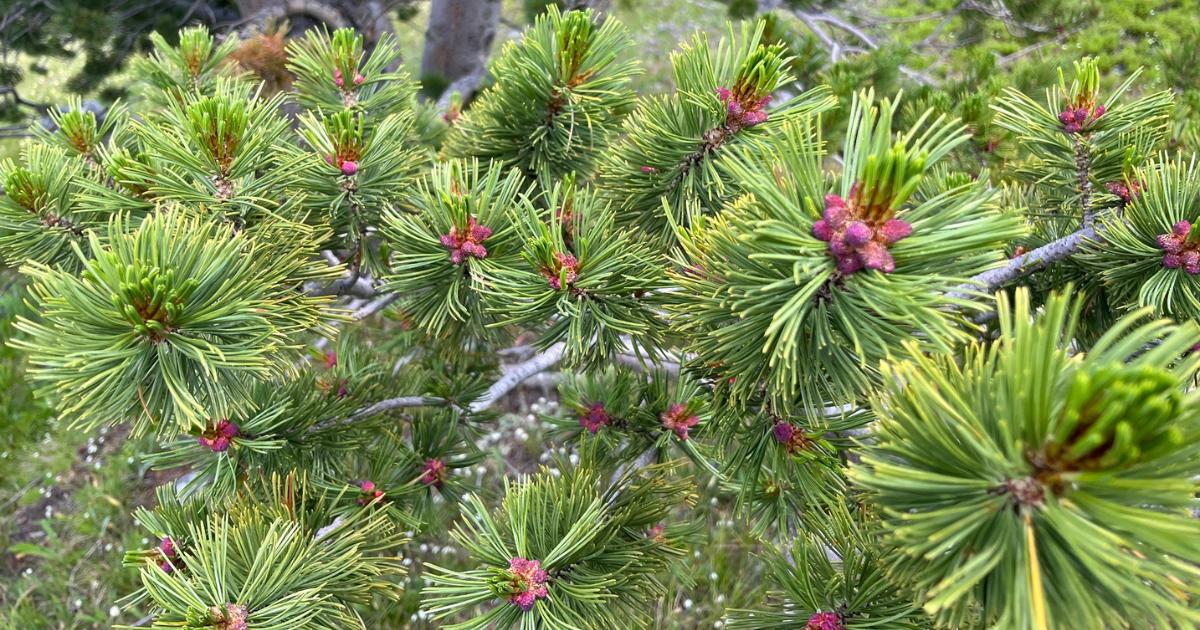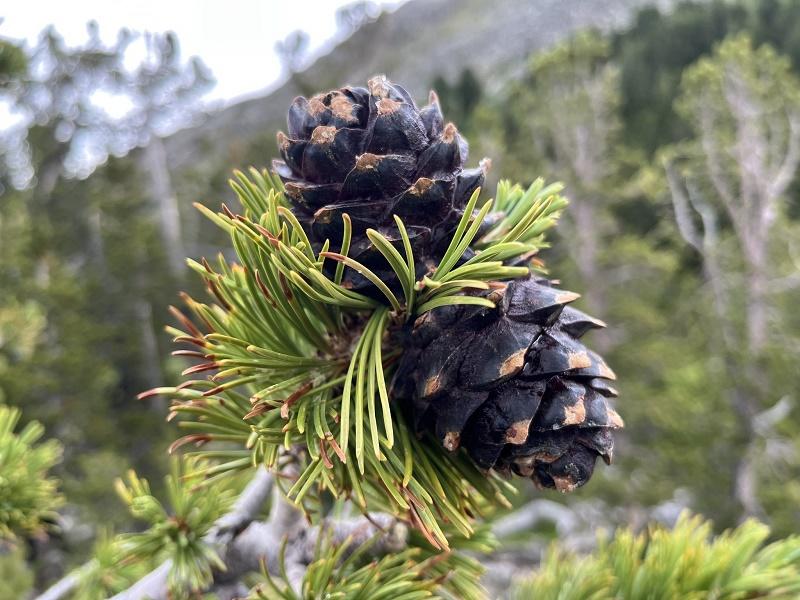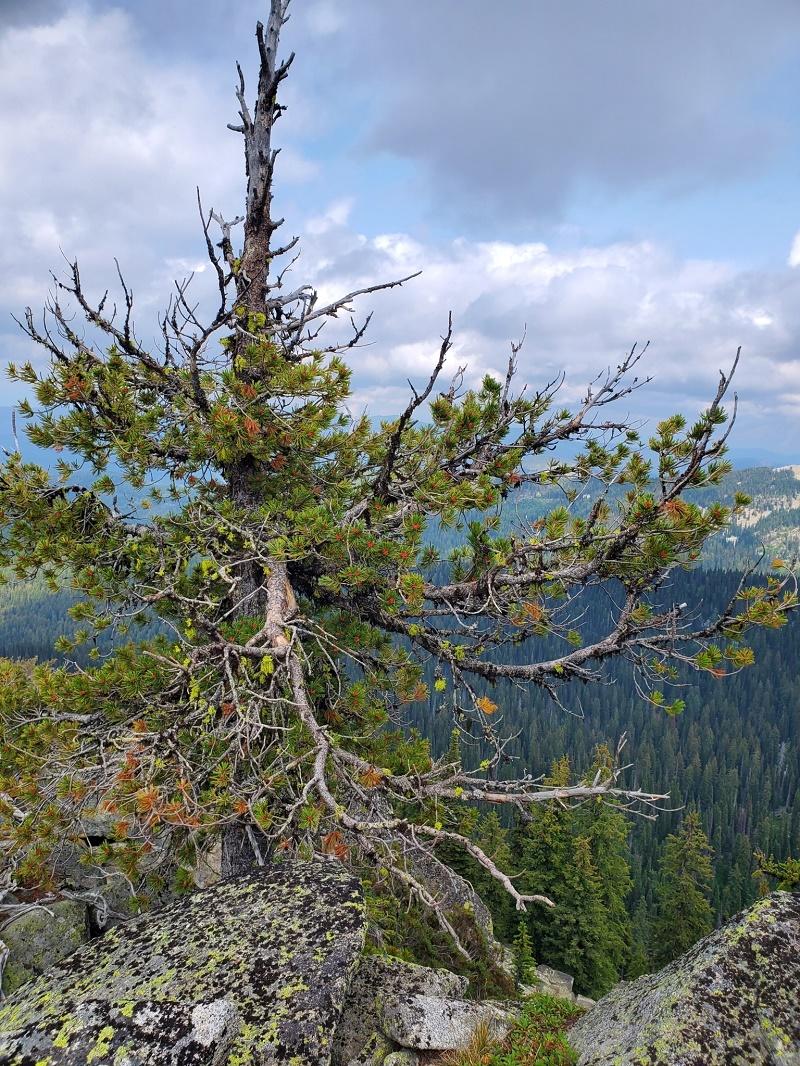Characteristics of Whitebark Pine (Pinus albicaulis)

Whitebark pine or Creeping pine (Pinus albicaulis) is a conifer tree that is a member of the white pine group, subgenus Pinus Strobus, and section Strobus. This species is native to the mountains of the western United States and Canada, particularly the subalpine regions of the Sierra Nevada, Cascade Range, Pacific Coast Ranges, and the Rocky Mountains from Wyoming to the north.
Pinus albicaulis usually grows at the highest altitudes in the mountains. Therefore, it is often found as krummholz, a tree that grows bent down close to the ground. Under more favorable conditions, this tree can grow to a height of 25 meters.
Whitebark pine (Pinus albicaulis) is difficult to distinguish from Limber Pine (Pinus flexilis), and usually requires seeds or pollen cones to distinguish them. In Pinus albicaulis, the female cone bearing the seeds is 4-7 cm long, dark purple when mature, and does not open on drying. The pollen cone is dark red. While Pinus flexilis has a cone measuring 6-12 cm long, green when immature, and opens to release seeds. Their pollen cones are yellow, and there is usually an intact old cone found underneath.
Pinus albicaulis is also difficult to distinguish from the Western White Pine (Pinus monticola) without the presence of a cone. However, the leaves of Pinus albicaulis are smooth when rubbed in both directions, while the leaves of the western white pine are rough when rubbed and are only smooth from tip to base. Another difference is that the Whitebark pine usually has shorter leaves, between 4-7 cm long, while the western white pine is 5-10 cm long.
WHITEBARK PINUS MASS DEATH
Many whitebark pines in their natural habitat are infected with white pine scald rust disease (Cronartium ribicola), a fungal disease that is native to Europe. In the northern Rocky Mountains of the United States, whitebark pine mortality in some areas exceeds 90 percent, where the disease affects nearly 143,000 hectares (580 km2). White pine scald rust fungus grows on whitebark pines to the species’ northern limits in coastal areas of British Columbia and the Canadian Rockies. This fungus has also destroyed the commercially valuable western white pine in this area and also infected the Limber pine (Pinus flexilis) population. Nearly 80 percent of whitebark pines in Mount Rainier National Park are infected with blister rust.
There are currently no effective methods for controlling the spread and effects of scald rust. However, a small number of trees (less than 5%) in most populations have genetic resistance to scald rust. Restoration efforts undertaken by the U.S. Forest Service, Bureau of Land Management, and National Park Service in the northern Rocky Mountains involve harvesting cones from known and potential whitebark pine, growing seedlings, and planting seedlings in suitable locations.
Outbreaks of the unusually large mountain pine beetle (Dendroctonus ponderosae), a species of bark beetle native to western North America, have also significantly contributed to the destruction of whitebark pines. INI beetles lay their eggs and introduce pathogenic fungi to their host trees, which include many other pine species, and a combination of larval feeding and fungal colonization is usually sufficient to kill old or otherwise unsanitary trees.
In 2007, the U.S. Fisheries and Wildlife Service estimated that beetles had killed whitebark pines on 500,000 acres in the West, while in 2009, beetles were estimated to have killed trees on 800,000 acres. The pine beetle resurgence has killed nearly 750,000 whitebark pines in the Greater Yellowstone Ecosystem.
Fire suppression has led to slow population declines over the last century by changing health dynamics and stand composition without fire ecology balancing their habitats and suppressing the threat of insect disease. In the absence of a low-grade fire cycle, whitebark pines in this stand are replaced by more shade-tolerant and non-fire-tolerant species such as subalpine spruce (Abies lasiocarpa) and Engelmann fir (Picea engelmannii).
PROTECTION FOR WHITEBARK PINE
On July 18, 2011, the US Fish and Wildlife Service reported that whitebark pines needed protection and, without it, the tree would soon be extinct. However, the agency announced it would not be able to register the tree as endangered or protect the organism, as it lacked the necessary staff and funds to do so. In June 2012, the Canadian federal government declared the whitebark pine critically endangered under the Species at Risk Act. As such, it is the first federally registered endangered tree in western Canada.
In response to the ongoing tree decline throughout its range, the Whitebark Pine Ecosystem Foundation was formed. Their mission is to raise awareness and promote conservation by sponsoring restoration projects, publishing a newsletter called “Nutcracker Records”, and hosting annual science and management workshops for anyone interested in whitebark pine. This US group works closely with the Whitebark Pine Ecosystem Foundation of Canada.
Characteristics of Whitebark Pine Leaves

The needle-like leaves are in clusters of five, 4-7 cm long, dark green, stiff, with entire margins, pointed and sharp. The outer side shows two deepened, inner side three to five stomata lines. The leaves stay on the tree for 6-8 years.
Characteristics of Whitebark Pine Fruit

The cones are oval, red, 10-15 mm long. The female cones are almost sessile ovate in shape with a length of 5-7 cm and a diameter of 4-6 cm. They are dark purple when young and turn brown when mature. The scales are thick and the scale guard shows a sharp, pointed umbilicus. The seeds are 8-12 mm thick, edible, and have no wings.
Characteristics of Whitebark Pine Tree

Whitebark pine grows as a large shrub generally 3-5 meters in height, although they can grow to 20 meters in more favorable areas. Stem diameter up to 2 meters.
The treetops are initially narrow cone-shaped and then become rounded to irregular. The young bark is whitish and smooth, then when it gets old skin tears to appear. The branches are prominent, young shoots are red-yellow, orange, or brown. The buds are red-brown, broadly ovoid, pointed, and have long loose pointed scales.
Leave a Reply